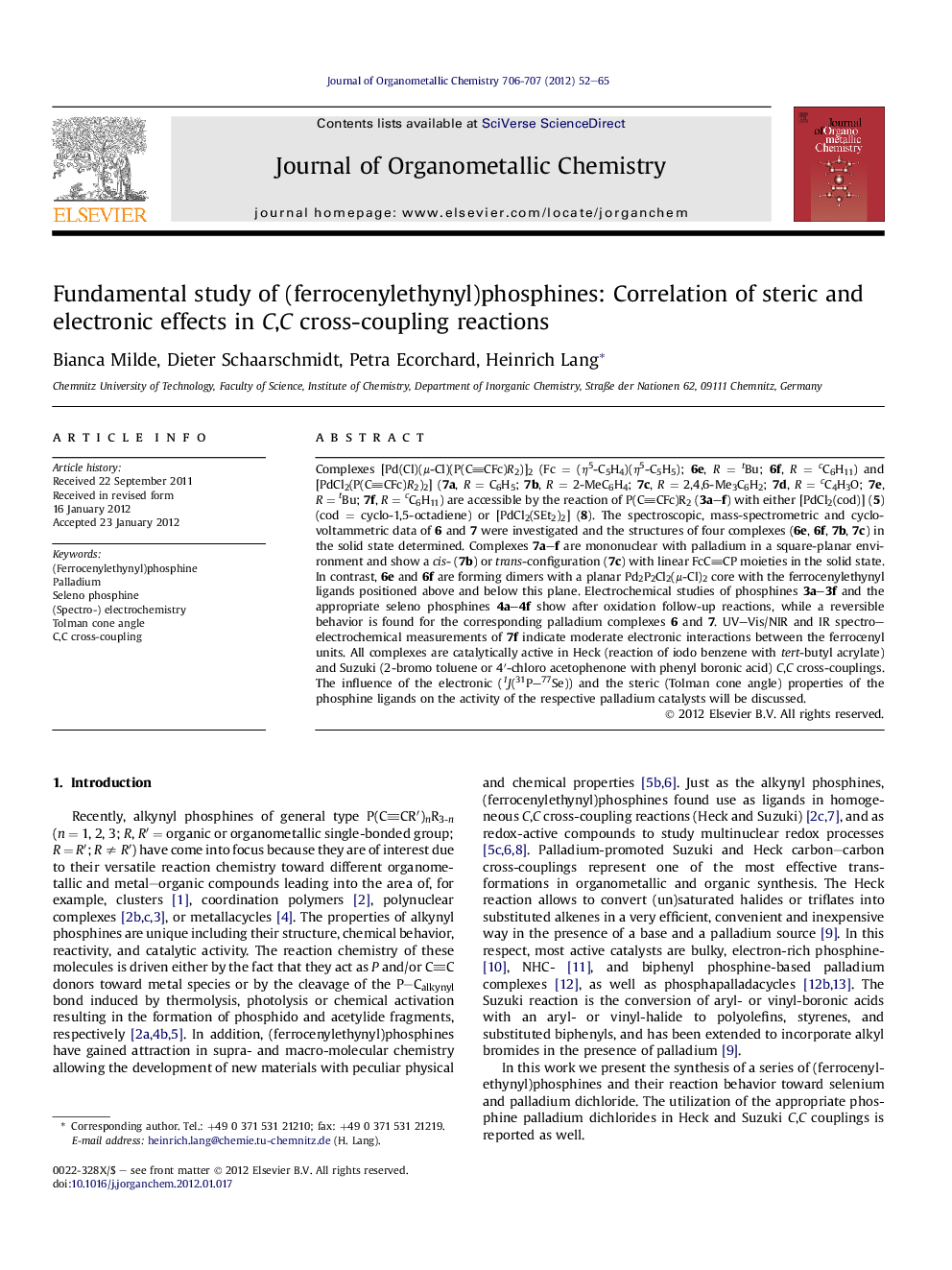| Article ID | Journal | Published Year | Pages | File Type |
|---|---|---|---|---|
| 1323307 | Journal of Organometallic Chemistry | 2012 | 14 Pages |
Complexes [Pd(Cl)(μ-Cl)(P(CCFc)R2)]2 (Fc = (η5-C5H4)(η5-C5H5); 6e, R = tBu; 6f, R = cC6H11) and [PdCl2(P(CCFc)R2)2] (7a, R = C6H5; 7b, R = 2-MeC6H4; 7c, R = 2,4,6-Me3C6H2; 7d, R = cC4H3O; 7e, R = tBu; 7f, R = cC6H11) are accessible by the reaction of P(CCFc)R2 (3a–f) with either [PdCl2(cod)] (5) (cod = cyclo-1,5-octadiene) or [PdCl2(SEt2)2] (8). The spectroscopic, mass-spectrometric and cyclovoltammetric data of 6 and 7 were investigated and the structures of four complexes (6e, 6f, 7b, 7c) in the solid state determined. Complexes 7a–f are mononuclear with palladium in a square-planar environment and show a cis- (7b) or trans-configuration (7c) with linear FcCCP moieties in the solid state. In contrast, 6e and 6f are forming dimers with a planar Pd2P2Cl2(μ-Cl)2 core with the ferrocenylethynyl ligands positioned above and below this plane. Electrochemical studies of phosphines 3a–3f and the appropriate seleno phosphines 4a–4f show after oxidation follow-up reactions, while a reversible behavior is found for the corresponding palladium complexes 6 and 7. UV–Vis/NIR and IR spectro–electrochemical measurements of 7f indicate moderate electronic interactions between the ferrocenyl units. All complexes are catalytically active in Heck (reaction of iodo benzene with tert-butyl acrylate) and Suzuki (2-bromo toluene or 4′-chloro acetophenone with phenyl boronic acid) C,C cross-couplings. The influence of the electronic (1J(31P–77Se)) and the steric (Tolman cone angle) properties of the phosphine ligands on the activity of the respective palladium catalysts will be discussed.
Graphical AbstractThe synthesis, reaction chemistry and electrochemical properties of a series of (ferrocenylethynyl)phosphines and –seleno phosphines as well as their palladium complexes is discussed. The electronic and steric properties of the palladium complexes and their catalytic behavior in C,C cross-couplings is investigated.Figure optionsDownload full-size imageDownload as PowerPoint slideHighlights► (Ferrocenylethynyl)phosphines form mono- and di-nuclear palladium complexes. ► The Pd complexes are efficient catalysts for Heck and Suzuki C,C cross-couplings. ► The influence of electronic and steric properties on the activity is discussed. ► Cyclovoltammetric and spectro–electrochemical measurements were carried out. ► [PdCl2(P(CCFc)(cC6H11)2)2] shows moderate to strong electronic coupling.
